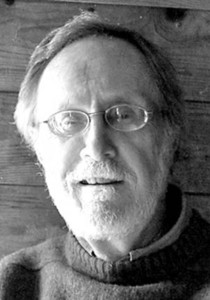John G. Howe, 83
John G. Howe, 83, of Waterford died suddenly on Friday, June 15, 2018.
A native of the Berkshire Mountains, John learned to ski as soon as he could walk and spent his early years skiing in the western shadow of Mt. Greylock. As a 10-year-old at the end of WWII, he was actively racing, participating in the Junior National Championships of 1950 and 1953. In 1956, he graduated from the University of Colorado with a bachelor’s of science degree in Mechanical Engineering. He continued to race in the Intercollegiate National Championships and was coached by Olympian Tom Jacobs.
In 1956 with his bride, Connie Willis, he returned east and went to work at the General Electric Company in Pittsfield, Mass., as a product design engineer on distribution transformers. Here, he continued to race in senior events in the east and coached junior racers.
In 1966, he was recruited by Head Ski Company of Timonium, Md. and was hired as their chief ski design and product development engineer. By the spring of 1967, he moved his young family to Maryland. His mission at Head was to revive and modernize the company’s ski production line. He and his team would leave behind ski design’s old technology of building from all aluminum and embrace a new European technology based on a laminate of fiberglass resin and aluminum. The new skis Head produced took the industry by storm and changed World Cup racing forever. During his tenure with the ski company, John helped to establish the new Head Ski factory in Kennelbach, Austria, where the modern-day Head skis and popular racing skis are now produced.
In 1969, Head Ski was sold to AMF, a publicly traded sporting good company, where it became AMF Head Ski Company. John continued to work with AMF Head in Timonium until 1971 when AMF closed the factory and moved it to Boulder, Colo. Back in Boulder, he staffed a new ski development laboratory and began making prototype tennis rackets to expand the company’s product line beyond single season sports. Tennis legends Arthur Ashe and Guillermo Vilas were hired to promote the new lines, and Ashe’s 1975 win at Wimbledon put John’s new Head Legend composite tennis racket on the map.
John holds a dozen patents and is an author of several books: co-authoring High Power Transformer Design Manual (1964), Skiing Mechanics, The New Skiing Mechanics, A Plan for Sustainability, The Last Chance for Sustainability, and The Last Chance for Survival.
With a second family, John moved back east permanently in 1980 with his wife, Debbie Mead, herself an accomplished skier. In Maine, he continued to ski competitively and develop a new compound ski design called, “The Claw,†specifically designed for the New England icy slopes.
His competitive drive did not end with skiing. John was also an accomplished lifelong runner, who competed in over 30 Mt. Washington foot races and scores of local races from 5Ks and biathlons to half and full marathons. He was a longtime member of the White Mountain Milers in New Hampshire and the Maine Track Club of Portland.
Among his other passions was the development of alternatives to finite fossil fuels. He fought long and hard to build public awareness of the risks of our dependence on fossil fuels through lectures and papers, as well as a comprehensive book of the subject titled, The End of Fossil Energy — a treatise he wrote on the phenomenon of Peak Oil.
John will be remembered by many around the world as a brilliant designer, engineer, tireless athlete, and critical thinker who simply strove to make the world a better and more sustainable place for all of us.
John is survived by his wife of 42 years, Debbie Howe; sons Edward and Thomas Howe; daughters Virginia Howe and Tina Marshall; his grandchildren and great-grandchildren.


